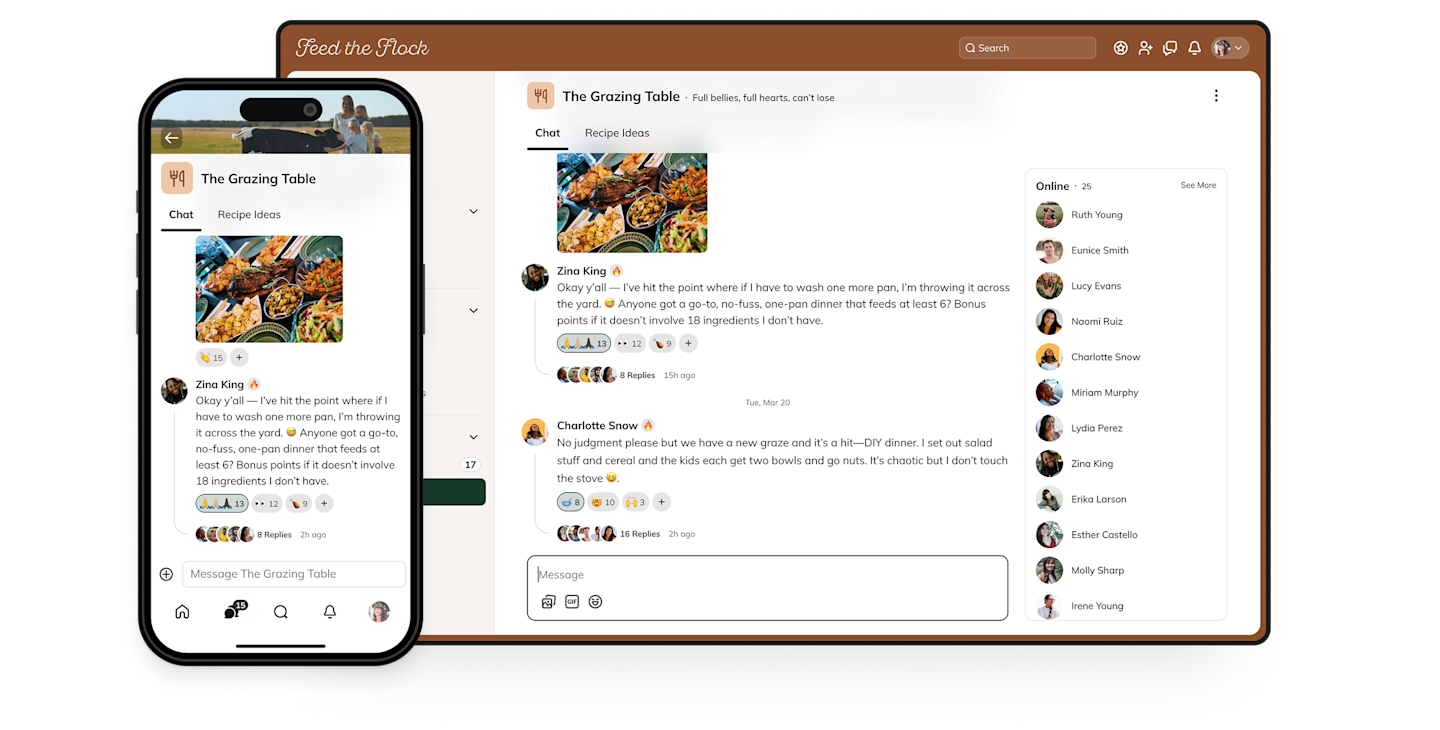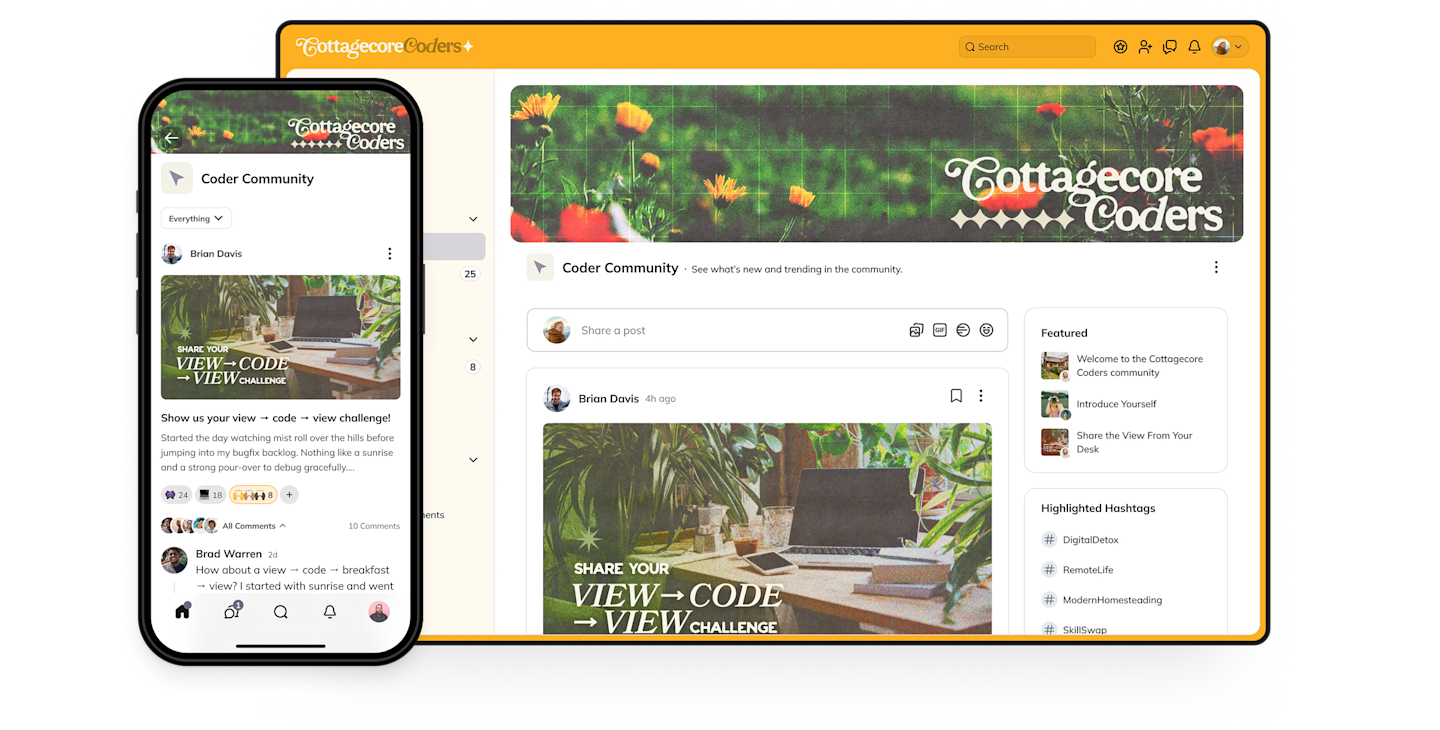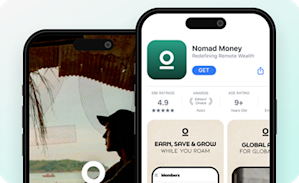Coaching
11 Secrets for Running an Amazing Mastermind Group
Ready to harness the transformative power of a mastermind group? We’ll walk you through running a great one!
Author
Mighty Team
Last Updated
July 30, 2025

So you’ve decided to run a mastermind group. Maybe you’ve even got together a few peers who are interested in joining. That’s great!
People have been forming mastermind groups for decades, ever since Napoleon Hill studied successful people in the early 1900s and recognized that most of them were members of one. But masterminds have become even more popular in the past 10 years, in part because of the many options we have to connect with people online!
A mastermind group is different from most other types of groups people join. That’s because a mastermind group is made up of peers, each of which brings their experience to the table to help each other master something, inspire one another, and offer accountability for growth over time.
You probably know that many business owners swear by mastermind groups. But they’re becoming more popular across the board for intrapreneurs, career-builders, personal development devotees, and more!
In this post, we’re going to talk about the nuts and bolts of actually running a mastermind group. If you’re just thinking about starting one, don’t forget to check out our full guide on how to start a mastermind group!
If you want more support in building your online community, come join OUR Mighty Community for free and meet other new and established community owners! We’d love to meet you. Join for free!
The background work to run a successful mastermind group
Before it comes to actually running a mastermind group, these preliminary steps will help you to lay a great foundation.
1. Get clarity on your big purpose
We talk about this with every kind of group on Mighty Networks, and a mastermind is no exception. Your mastermind needs a “big purpose” statement, to help your members know what they’re getting and what the goals are.

In many cases, the goal will be mastery–but that’s a bit fuzzy. If it’s a group of entrepreneurs, for example, it might mean goals like doubling their business, helping business owners scale, or hiring a team to free up creative space for an owner.
Since each of your members will have slightly different goals, it might be best to keep your big purpose statement a little broad. For example:
We bring together business owners to share knowledge, experience, and accountability so that we can be more profitable, follow through on big plans, and have more freedom.
Whatever your group composition looks like, and whatever purpose brings you together, this statement will make sure you’re all on the same page.
Here are a few more tips:
Hold the big purpose statement loosely until all the members agree on it. A mastermind needs to be a partnership of equals, so let them weigh in!
Revisit the big purpose statement if you have timed intervals for your group (e.g. if you stop every six months and take a vote on continuing–more on this below.)
We have a training on finding your Big Purpose that's included in our free Mighty Community!
2. Handpick your members
Mastermind groups take some finesse. Since they’re ultimately about sharing experience, bringing people who have a good knowledge of something together to become masters, you need the right blend of people.
Here are a few things to keep in mind when choosing your people:
Expertise
You want people who actually have some expertise in the area your mastermind group is talking about. You want people who have spent some time in a given area and have knowledge to share. This is what makes the group work.
For example, if your mastermind is made up of entrepreneurs, pick people who have actually started a business before. Don’t try to mix seasoned business owners with people just starting out. Your more senior people won’t get the benefit of the group and may disengage.
Experience
One of the best parts of a mastermind group is when you have group members who can share their experience. To do this, again, you need people who have some experience. The value comes from sharing this hard-won wisdom.
Personality
This can be a bit tricky at the start of a group, especially if you don’t know people well, but try to sit down with each potential group member for a conversation and get a sense of their personality. Are they a bulldozer? Are they rude? Will they make people feel uncomfortable or will they listen?
Unfortunately, chemistry in a mastermind group is a tricky thing. And to be honest, you can’t completely pull all the strings or guess how people will behave. The person you thought was going to take over might prove to be the best listener once you start meeting.
But if you’re just getting your group off the ground, it’s a good idea to handpick your members.

3. Create clear rules and expectations
A good mastermind group needs structure. So, before you even start it, put some rules and expectations into place that will help your members experience structure and predictability.
Here are a few rules your mastermind group could set from the beginning, and you can communicate them to members even before the first meeting:
Attendance
It’s not middle school, but a mastermind requires serious commitment to the transformations people in the group will experience. That’s why a lot of groups choose to have expectations around attendance (e.g. you can miss one meeting if you really need to, but after that you’re out).
It’s not being heavy-handed to set a rule like this. It’s showing your members that this is a group dedicated to serious transformation, and you can’t experience transformation if you don’t show up.
How to treat each other
In general, it’s great to start with the expectation that the group will be a safe space. Safe from judgement, bullying, discrimination, and all the other terrible things that occasionally pop up in human interactions. Set a few ground rules, or even just one big one around respect and kindness, and communicate it too.
Make it clear that you’ll enforce these rules.
4. Choose a platform
Some mastermind groups choose an online space where they can live. It lets them stay in touch and build a community outside of the weekly meeting. The Host can share things they’re thinking about, weekly questions for reflection, and other things to help keep the mastermind members on track in between the meetings.

Mighty Networks is a great place to host your mastermind! You can schedule your events, communicate your agenda and ground rules, and so much more–and it’s all built into the platform and really easy to use.
5. Set your meeting time & agenda
This seems pretty easy, but sometimes it’s the most challenging. When you have a group of busy people, it can be tricky to bring their schedules together. You can use services to poll your members about the best time to meet. If you have a Mighty Network–you can do this with the poll function and find a time that works for everyone.
And once it's set, everyone can see the details live in your event section!

Do share the group rules and the agenda before the meeting so your members know what to expect and if they need to prepare a bit (even if just mentally). We’ll talk more about the agenda below.
How to run a mastermind group meeting
6. Start on time
Have you ever been in groups where it’s the set start time, and the facilitator just says, “Oh, we’ll wait for everyone else to get here”?
The message that sends to your members, before you’ve even started, is that their time is not as important as the stragglers. After all, they worked hard to show up on time. Reward them by starting the meeting on time.
Some mastermind groups even have a rule, if you’re going to be more than 10 minutes late, don’t bother coming in. But ultimately you can choose what’s right for your group.
7. Welcome and introductions
It’s important to do this, especially in your first meeting. But remember that 20 minutes of small talk at the start of the meeting is draining away your members’ valuable time. People can make small talk before and after if they want.
Use the introduction time to bring you right into the material. So, for example, you could go around and have everyone say their name and their goals for attending the first session. This gets you right into the frame of mind to think about the problems you’re working on.

Here are some other welcome activities you can try. Have members:
Share recent wins and losses
Identify their “why”
Name something they’d like to improve about themselves
Close their eyes and breathe for 30 seconds
The key word here is “vulnerable.” And as Brené Brown’s work on shame and vulnerability has shown us, vulnerability has the power to connect us and ground us in the real.
Use your welcome to try to get your members comfortable with being a bit vulnerable–it will pay dividends for the rest of your time together.
8. Try the “Hot Seat” method
One of the most popular mastermind features is the “hot seat” method, where one member shares something they’re working on, uninterrupted, for a period of time–say 10 minutes. The other members can then ask questions, and offer feedback from their own experiences.
Try to keep the feedback focused on actionable things, and ask each member to commit to a course of action or a “next step” at the end of their session or the meeting. You can write these goals down to document them.
Remember, the goal of the “hot seat” is not to have the other members tell the member what to do. It’s to share experiences and ideas, and most importantly, to ask questions, to help the member decide what THEY want to do.
9. Keep accountability
One of the best things about a mastermind group is the accountability that comes with it. It’s easy to say, “I’m going to network with C-Suites this month and leverage those relationships into a CMO role” or “I’m going to do market research and design a new product.”
Heck, we all do this all the time. Isn’t that what New Year’s resolutions are? How often do we keep them?
The mastermind group adds a layer of accountability. When you say you’re going to do something, you need to know that you’re showing up next month having given it your best dang effort–or else you’re going to have to tell your group that you didn’t try.
That’s a tough thing, even a bit embarrassing. And the resulting power is accountability.
If you have an online community accompanying your mastermind group, you can post people’s goals and next steps in the community, and let people check in and ask questions between the scheduled group sessions.

10. Closing thoughts
After your time together, people will often be energized. That’s a fantastic thing! So to close your meeting, keep it simple. Don’t add a bunch of extra fluff that will take away from that energy.
Here are a few closing exercises that work great for drawing the meeting together and getting you ready to go back into the world for another month:
Go around the circle and share a 1-word takeaway from the meeting
Go around the circle and have everyone state their most important next step
Have everyone close their eyes and visualize coming back next month and presenting their results. How good will it feel?
These sorts of exercises should be centering and powerful, helping you reclaim the focus and energy of the meeting and push it forward. Find what feels good for you and your group. (e.g. not everyone is into visualization. If it’s not your thing, find a closing activity you can be comfortable leading.)
11. Schedule the next meeting
You might have set a scheduled meeting time at the beginning of your mastermind journey (e.g. “We meet the second Tuesday of each month.” This works really well and is probably the best way to do it.
Otherwise, make sure you end each meeting with a reminder of when the next meeting will be.
Make sure you schedule your sessions with enough time in between for members to act on decisions they’ve made. Most masterminds meet monthly or quarterly.
Sample mastermind schedule
If you’re wondering how to schedule your mastermind, you could try something like this! (This is for a group with 6 members.)
3:00-3:10: Welcome and gathering exercise3:10-3:55: 3 hot seat sessions (15 mins each)3:55-4:05: Break4:05-4:50: 3 more hot seat sessions (15 minutes each)4:50-5:00: Closing reflections & announcements
Conclusion

Having covered all these things, you’re ready to run your first mastermind group! It’s exciting. Be aware that you’ll learn and grow with your group. If you’re facilitating, and it’s your first time, give yourself permission to not be perfect at it. You’ll get better as you grow. And hopefully, you’ve built a group full of energetic, kind people who will work with you to make sure everyone gets a chance.
So what are you waiting for? You’re ready to unlock the powerful transformations that come with a mastermind group. Good luck!
And if you want an amazing platform to host your group on, come give Mighty a try! Our powerful cultural software platform brings content, courses, community, and commerce together. It’s free for 14 days–no credit card required.
Ready to start building your mastermind group?
Ready to start building your community?
Start a free 14-day trial to explore Mighty—no credit card required.
More like this
Join Mighty Community
Learn the principles of Community Design™ (and see them in action) alongside thousands of creators and entrepreneurs. It's free to join!

Online Courses
Creating a Course
Teaching a Course
Course Platforms
Selling a Course
Communities & Memberships
Community Platforms
Managing a Community
Building a Community
Growing a Community
Monetizing a Community
Content Creation
Creators & Entrepreneurs
Monetization
Content Creation
Starting a Business
Website Builders
Creating & Managing a Website
Events
Event Platforms
Hosting & Marketing Events
Branded Apps
Creating a Mobile App
Coaching Apps
Community Apps
Coaching
Mastermind Groups
Starting a Coaching Business
Coaching Platforms
Filter by Category
Online Courses
Communities & Memberships
Creators & Entrepreneurs
Events
Branded Apps
Coaching
Build a $1 Million Community
This free masterclass went viral—sign up to learn why.























